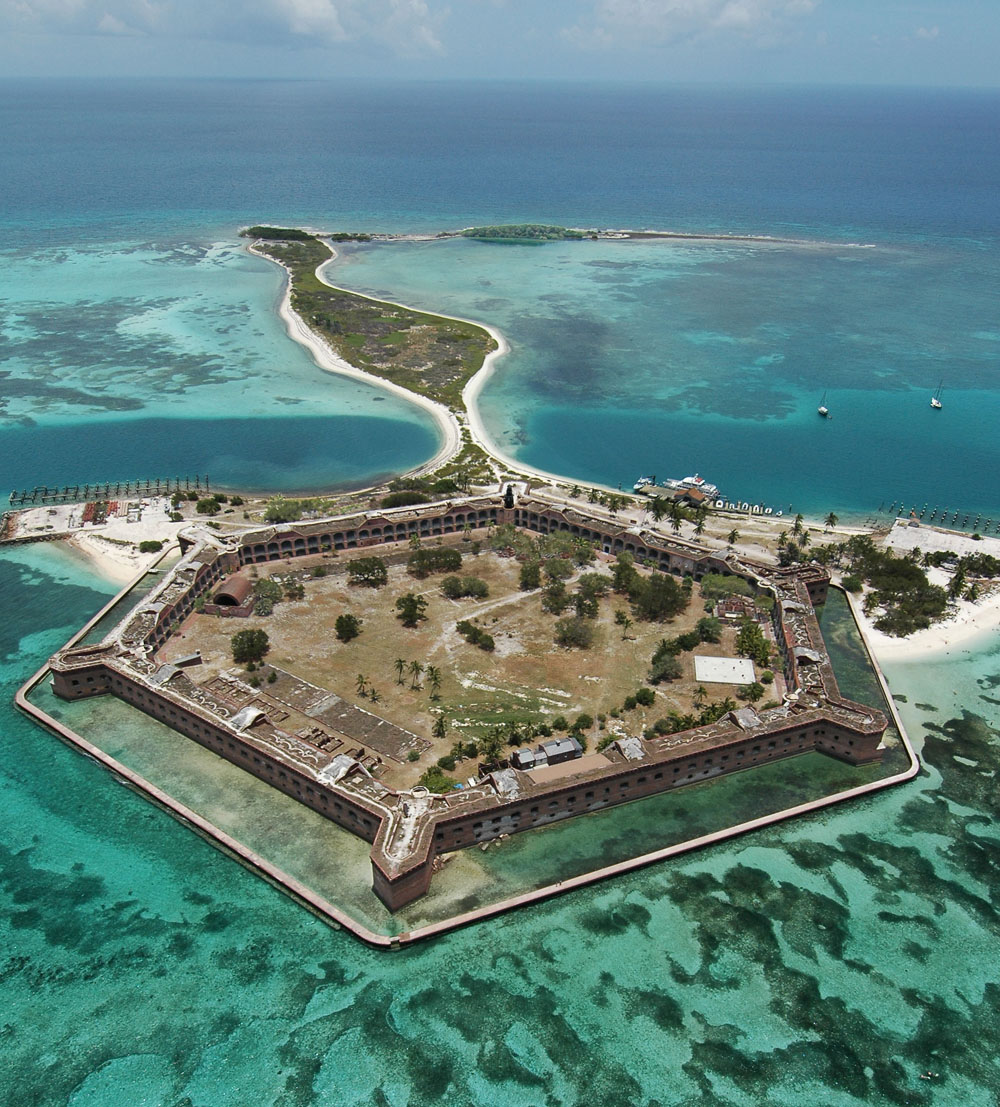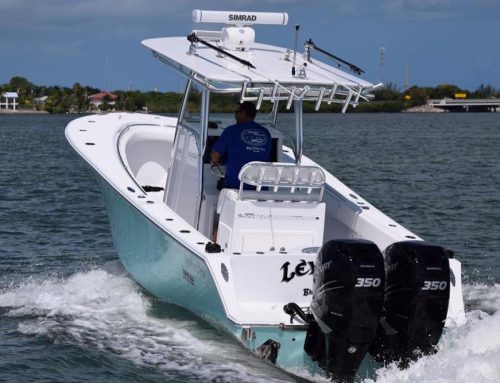The United States’ National Park Service, often called “America’s best idea,” celebrates its 100th birthday in 2016. And if you’re visiting the Florida Keys, you have a great opportunity to learn, discover and be inspired by two national parks that can be reached from the island chain.
Dry Tortugas National Park, one of the most remote parks in America, lies about 70 miles west of Key West in the Gulf of Mexico. A cluster of seven tiny coral-and-sand islands covering 100 square miles, Dry Tortugas is accessible only by seaplane or boat.
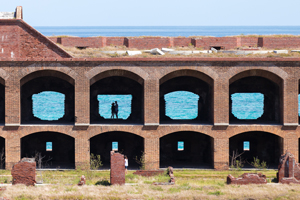
The massive Fort Jefferson was once a Union military prison whose most famous prisoner was Dr. Samuel A. Mudd. (Photo by Laurence Norah, Florida Keys News Bureau)
The park’s centerpiece is the awe-inspiring Fort Jefferson. One of the largest masonry structures in the entire Western Hemisphere, it’s sometimes called the Gibraltar of the Gulf. Its construction began in 1846, and the massive fort served as a Union military prison for captured deserters and others. Its most famous prisoner was Dr. Samuel Mudd, who was convicted of conspiracy in President Abraham Lincoln’s 1865 assassination (but pardoned later).
These days, outdoor enthusiasts can “unplug” at the remote park with ranger-guided tours, pristine beaches for sunning, world-class bird watching and clear blue waters for snorkeling. Garden Key, one of the most desert-like of the islands, is popular for overnight tent camping.
So how do you get there? The Yankee Freedom ferry is the only commercial boat authorized to carry passengers to the park. It’s a high-speed 110-foot catamaran that departs from the Key West Ferry Terminal and takes about 2.25 hours to get to the Tortugas.
The day-long trip includes breakfast, lunch, a fort tour and snorkel gear. Best of all, you’ll have more than four hours to explore the fort, snorkel, and laze on the beach.
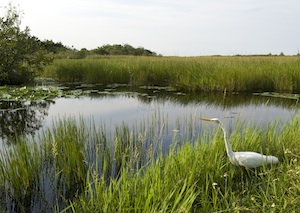
Everglades National Park features many rare and endangered species in its aquatic and semi-aquatic habitats and sawgrass prairies. (Photo by Bob Care, Florida Keys News Bureau)
You can also fly to the Tortugas with Key West Seaplane Adventures. Morning, afternoon and full-day excursions can be booked aboard 10-passenger seaplanes, and flights depart from the company’s headquarters at Key West International Airport. Travel time between Key West and the Dry Tortugas is approximately 40 minutes each way. Half-day trips include at least 2.5 hours to enjoy the park, while full-day trips include at least 6.5 hours.
At the northern end of the Keys and into mainland Florida, you’ll find Everglades National Park. Established in 1947, it spans an astonishing 1.5 million acres. It’s actually the largest subtropical wilderness in the United States — and features many rare and endangered species.
Minnesotan Marjory Stoneman Douglas, author of “The Everglades: River of Grass,” became synonymous with the park through her passionate efforts to protect the marshlands from agriculture and real estate development.
Everglades National Park abuts the near-shore waters of Key Largo and Islamorada. In fact, the waters around the Upper Keys are an ecologically fascinating place where fresh water from the Everglades mixes with the saltwater of Florida Bay — making the area a popular spot for sport fishing.
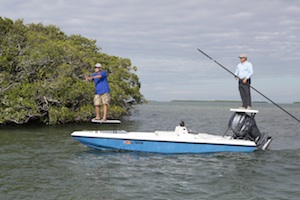
Skilled Keys light-tackle fishing guides are ready to accompany visitors and introduce them to the wildlife and wilderness. (Photo by Bob Care, Florida Keys News Bureau)
There you might spot birds and wildlife including roseate spoonbills, American eagles, bottlenose dolphins, crocodiles, sea turtles, alligators and manatees.
Park sport fishing, with a focus on catch-and-release, is world-renowned for snook, trout, tarpon and scores of other species. Skilled Upper Keys light-tackle fishing guides and eco-tour outfitters are ready to accompany you and introduce you to the unique wildlife of this fascinating wilderness area.
If you enjoy camping and paddling excursions, you might check out the extended kayak and canoe adventures that are available. Or consider taking a day trip by car to the Flamingo outpost, the southernmost point in mainland Florida. The route is rich in walking trails and observation decks that offer stunning views of the park.
As well as exploring two national parks, the Keys offer many more extraordinary adventures for people intrigued by the region’s environment. To discover other eco-adventures and attractions, just click here.

